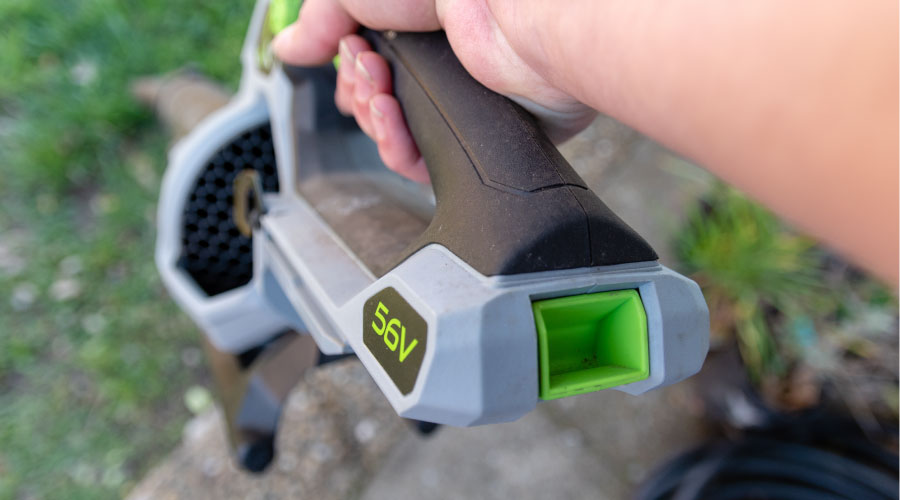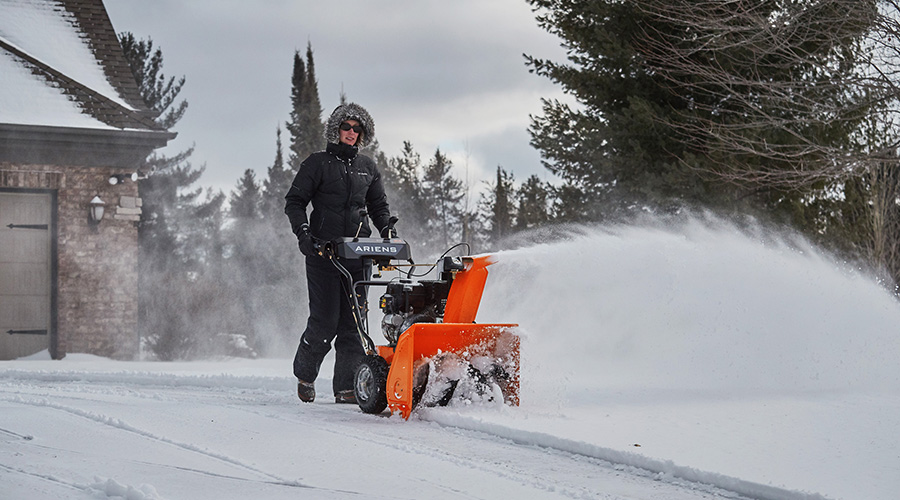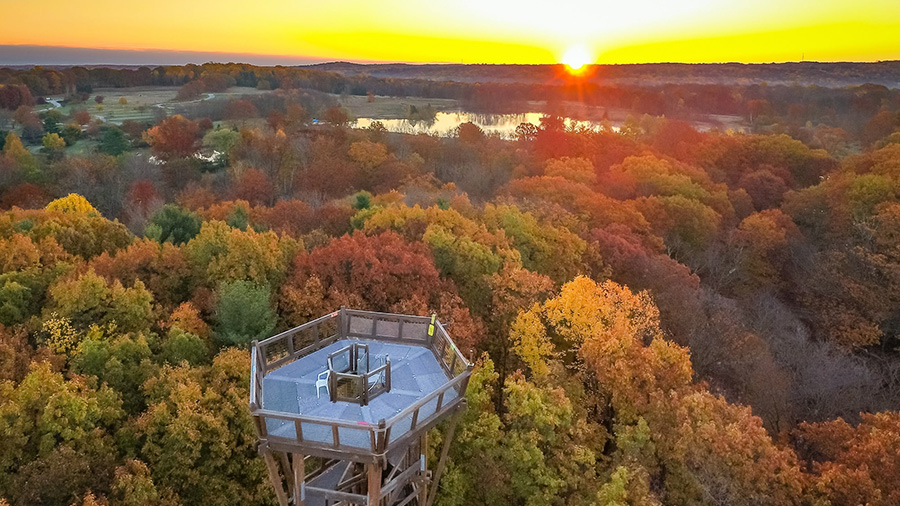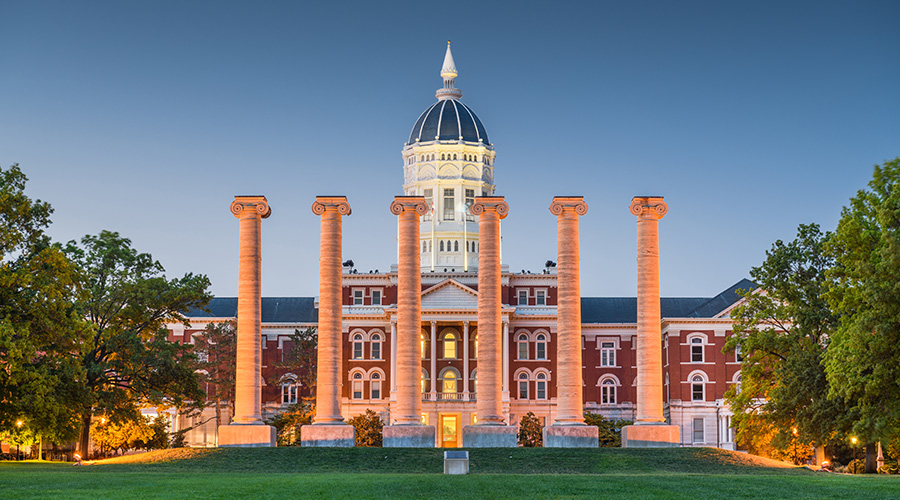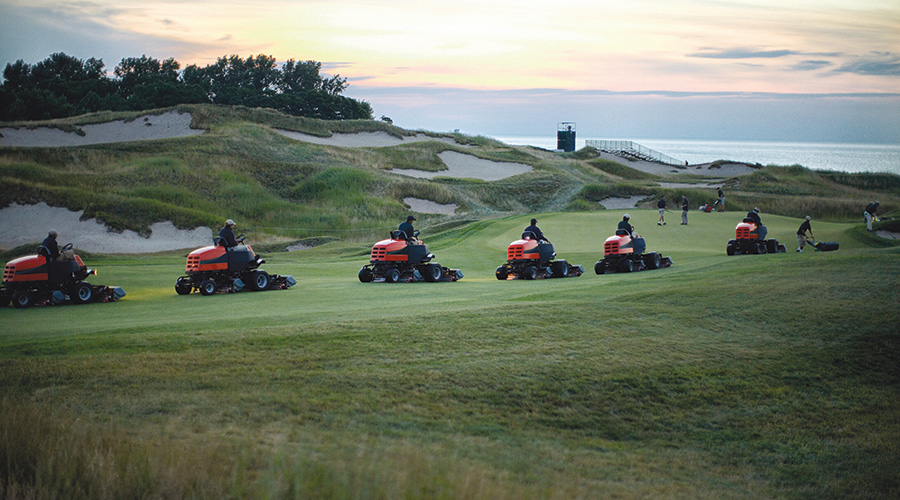 Kohler Co.
Kohler Co.Expert Tips on Maintaining Kohler's Golf Courses
Kohler Co.’s grounds and maintenance staff keep equipment operating at world-class level.
By Dave Lubach, Executive Editor
The first question Chris Zugel often asks during job interviews is, “Have you ever mowed your yard?”
With four world-class championship golf courses and more than 75 total properties and businesses that make up Kohler Co.'s realm, the company’s associates – Kohler's preferred term to describe its employees – have plenty of turf to maintain.
They have an arsenal of grounds equipment to operate and duties to perform in maintaining Kohler’s properties, which include thousands of acres centered mostly in a small village in Southeastern Wisconsin. The properties that receive the bulk of the attention are Kohler’s golf properties — the award-winning Blackwolf Run and Whistling Straits courses — which have hosted multiple major golf championships and are known throughout the world.
Keeping the courses’ tees boxes, fairways, greens and surrounding areas looking world-class requires an array of machines and other grounds equipment.
Ground to cover
As director of agronomy and landscape for Kohler Co., Zugel and his team have a lot of ground to cover. In addition to the two golf courses, Kohler properties include manufacturing plants, hotels, restaurants and shops.
Zugel and his team oversee many of the organization’s grounds operations out of a maintenance building near the Blackwolf Run golf facility, which is in the village of Kohler.
The high-profile golf properties occupy a great deal of Zugel’s time.
Under the umbrella of Destination Kohler — a Five Diamond Resort that also includes lodging and dining facilities — Blackwolf Run and Whistling Straits annually rank among the world's top golf destinations. The Straits Course on the Whistling Straits property played host to the Ryder Cup as recently as 2021 and has hosted PGA Championships and other United States Golf Association events.
The Whistling Straits property sits on 560 acres along 2 miles of Lake Michigan shoreline about 12 miles northeast of Kohler. The property includes two championship-level courses, the famed Straits Course and the adjacent Irish Course, as well as a 13,000-square-foot clubhouse.
Blackwolf Run is in the Village of Kohler, along with many of the company’s hospitality properties, business offices and the manufacturing plant. It is the site of the original Kohler Co. course and includes two championship-level courses — the River Course and the Meadow Valleys.
Blackwolf Run recently added a par-3 course, a 10-hole, par-27 course, and a 2-acre putting course. In maintaining the internationally known golf resort, Zugel’s staff tries to do most of its work behind the scenes before golfers start making their way onto the course.
“Golf maintenance is here a little early, so they’ll probably start their day between 4 and 4:30 a.m.,” Zugel says. “The way we have our maintenance plan structured is we stay ahead of the golf. A lot of golf courses you go to, there might be somebody mowing the fairway or rough when you’re there, but you won’t see that on our property.”
When the grounds crew does take to the course for its daily tasks, it does with an array of equipment on hand to tackle just about any kind of projects.
Specialized equipment fleet
The maintenance teams at Kohler’s golf properties employ around 20 full-time associates, filling positions in mechanics, superintendents and landscape. Their duties include mowing the tees, greens and fairways and performing other golf course maintenance.
Kohler’s landscape team has more than 500 different pieces of equipment that help maintain the courses and the company’s other properties, Zugel says.
“We have regular stuff like a homeowner would have, like push mowers, riding lawn mowers, string trimmers, blowers, things like that,” he says. “But then we have very specific things, like a greens mower.”
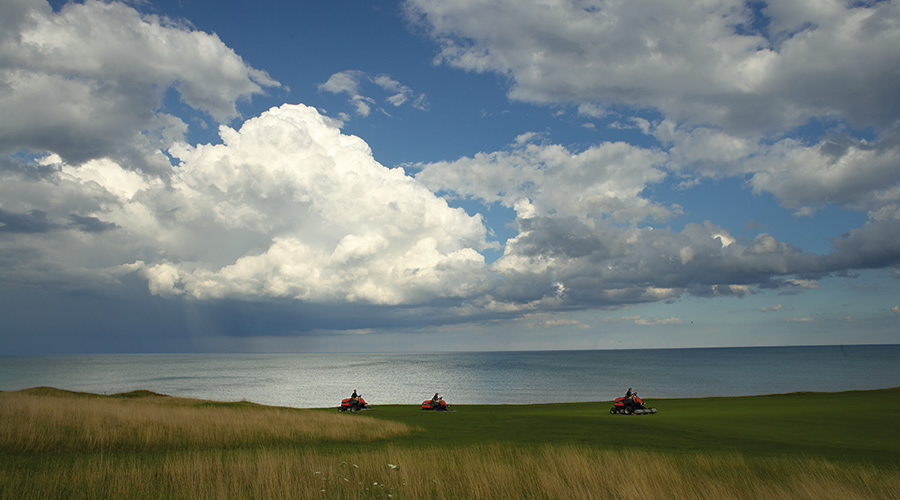
Crews use about 10 mowers each day to mow at each golf property. Of the equipment required to maintain a golf course and the company’s surrounding properties, the riding mowers are probably the most interesting machines because of how they operate and are maintained.
Because course mowers are used almost daily during golf season, the assigned mowers stay set up to mow the same areas day after day for logistical reasons.
“The mowers are very specific in what they do in each area of the golf course, and in the landscape department, their uses are something different,” Zugel says of the riding mowers. “You might not need something that can climb a hill in a landscape because it’s relatively flat, but we have machines that can climb 30- to-40-degree banks safely.”
Depending on what it is cutting, each mower has blades set at different heights depending on whether it is used on tees, greens or fairways.
“It’s the same type of mower,” Zugel says. “It’s a reel mower, which looks like a cylinder with anywhere from 7 to 14 blades on it. The lower the height, the more blades. For a fairway, we have five mowers, so it’s effectively like mowing with five greens mowers at the same time. A tee mower is typically the same as what a greens mower is. It’s just set higher."
In addition to the mowers, crews rely on construction equipment and a fleet of utility vehicles with flatbeds and pickup trucks to move people and equipment around the properties. Exclusive to the golf course are bunker-raking machines, that smooth out sand traps across the courses – quite a task for a property that has bunkers that can be hundreds of yards long.
“Drive by an equipment store, and we probably have it, whether it’s an excavator, skid steers, and stuff you get at a rental store, like sod cutters and trenchers,” Zugel says. “Typically, if something pops up, we’ll go through the thought of, ‘We can rent it.’ Let’s say we need a bucket to get to a tall tree to trim branches. If it’s something that’s once a year, we’ll rent. If it’s something we’re going to be using on a regular basis, we’ll work to purchase that piece if it makes financial sense.”
Maintenance matters
The Kohler properties require more than 50 mowers to meet their needs. With the golf course greens cut daily – more than 80 greens counting the regular 72 holes, the short course and the putting course – that means a lot of wear and tear for machines that can cost more than $10,000 each.
Kohler employs seven mechanics to maintain its fleet. Much of their time is spent working on the riding mowers, which require precise cutting levels, whether they are cutting greens, tees or fairways.
“Including oil changes, there’s always something that’s going on,” Zugel says. “We’re pretty busy. Every time a mower goes out, it gets adjusted. They’re like a nice pair of scissors. A big part of the health of the grass is a nice clean cut, just like you wouldn’t want to get operated on with a butter knife. The mowers are adjusted to cut perfectly and makes the grass look better.”
To stay on top of the latest technological trends and keep its fleet operating at high levels, Zugel has an equipment replacement plan in place for all the department’s equipment. With so many of Kohler’s machines taking on heavy use, the company regularly monitors the wear and tear with so the department will not face significant machine purchases annually.
“We have a tracking plan, where if we get new greens mowers or whatever, we meet a couple of times a year and revisit the plans with the mechanics,” he says. “If the mechanics tell us, 'We weren’t scheduled to replace this machine for two or three years, but this is really becoming a problem,’ and they think we should start to look at new technology, we’ll start to shift things.”
Zugel has started to dabble in emerging technologies for grounds equipment, such as battery and electric technology, as well as autonomous machines. Golf courses offer challenges for both technologies because of the terrain. Some battery-powered machines can lose power faster due to the variety of terrains on a course, for example.
The precise cutting required on courses can also provide challenges. Some battery-operated machines are not yet able to accommodate the precise cutting heights required at Kohler’s courses.
“They can’t cut low enough right now on the golf course, as we’re cutting at effectively an eighth of an inch,” Zugel said of the greens. “There’s not a lot of technology that will do that, because if you’re cutting a home lawn at 2 inches, that’s OK.”
Dave Lubach is executive editor of the facility market. He has nine years of experience writing about facility management and maintenance issues.
Related Topics:










